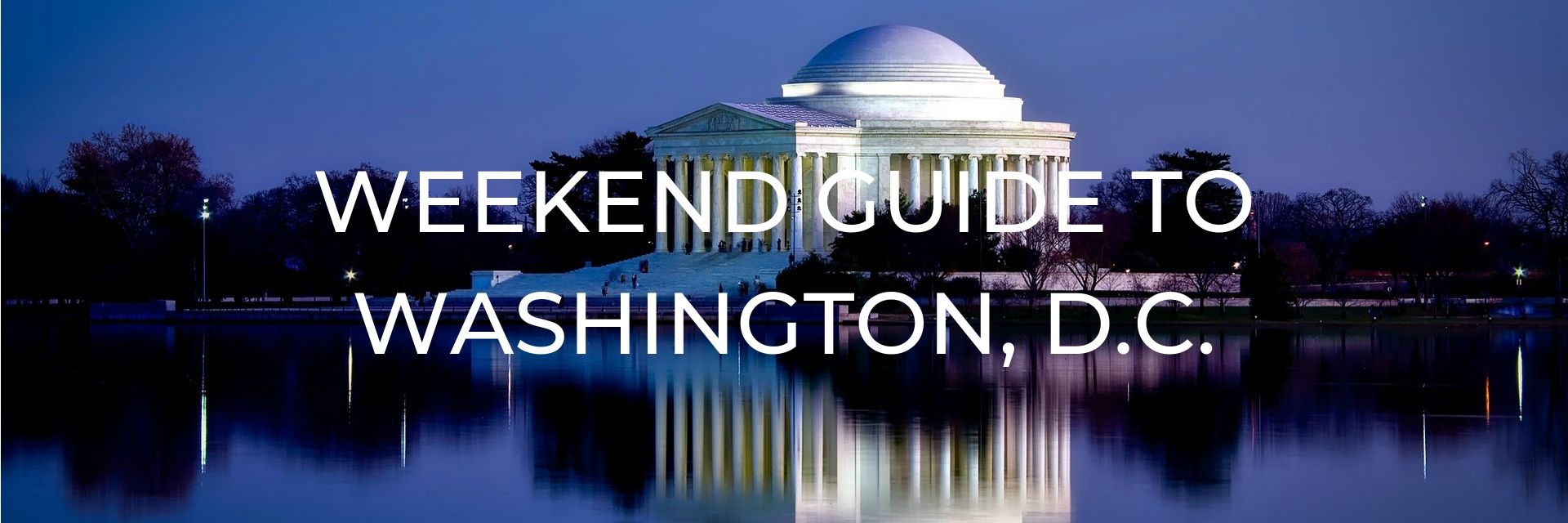
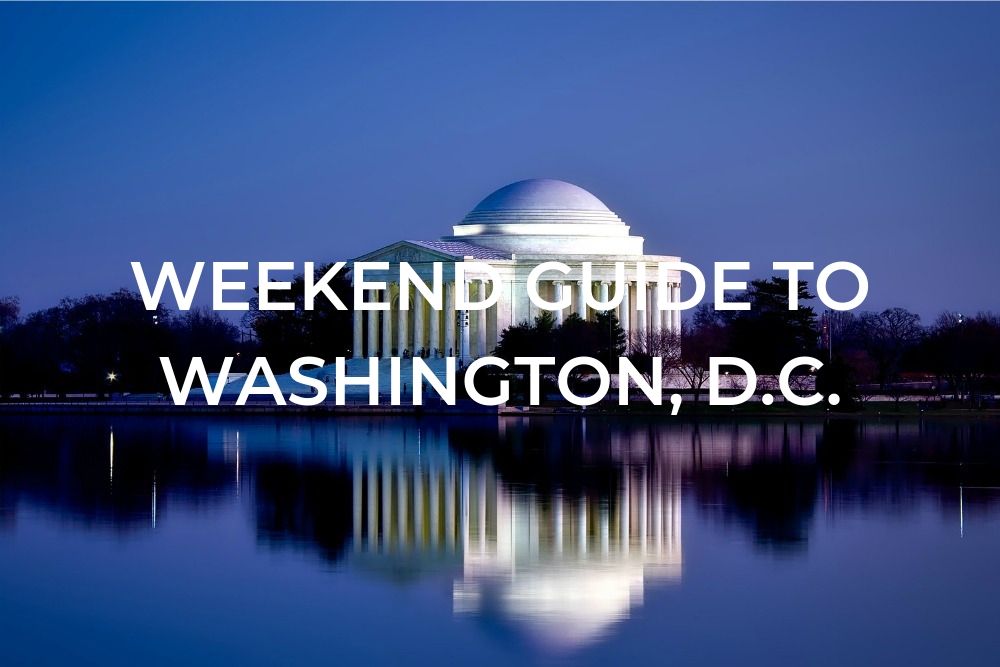
A colourful history, great attractions, fantastic museums, and the seat of government combine to make Washington D.C. a great place to visit. The capital city of the USA has a rich mix of attractions almost all within easy reach on foot. You can see the home of the president, monuments to famous presidents of the past and an entire mall full of world-class museums.
Want to save this for later? Click the Pinterest button on the left for a pinnable image!
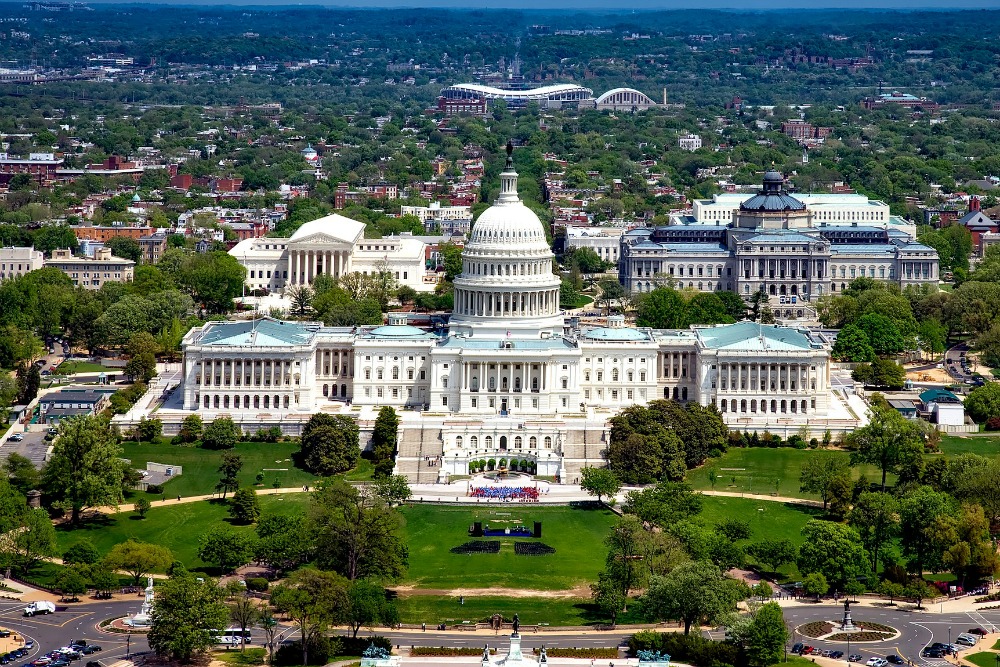
Washington D.C. is of course home to the president and federal government, but this relatively tiny part of the USA offers much more, such as the world-class Smithsonian museums, the National Archive, the Capitol Building, monuments and memorials.
Originally a perfect square, Washington D.C. is now bordered on the south-east by the Potomac River and Maryland to the north and east. For all its importance to the USA, it’s not a state and is controlled by Congress, yet people who live there don’t even get to vote for representatives IN Congress!
This weekend guide will get you started with suggestions for things to see and do. We hope you enjoy Washington D.C.!
WHERE TO STAY IN WASHINGTON, D.C.
How do you even start to pick a place to stay in Washington, D.C.? The hotel options are so many and varied. In Washington, D.C., we recommend choosing a hotel as close to the National Mall as possible as most of the main sites are very close to this part of the city.
For this itinerary three options are:
POD D.C. $ – Considering the good prices on offer, this hotel offers comfortable accommodations and three social meeting spaces to meet new friends after a day exploring the city. As an added bonus, you can go up to the roof to enjoy a panoramic view of the capital.
BOOK YOUR STAY: Direct with Hotel | Hotels.com | Booking.com | TripAdvisor
BLUEBIRD SUITES D.C. $$ – This apartment hotel offers guests one or two-bedroom apartments complete with everything you’ll need to enjoy your stay. Rooms come complete with a full kitchen including a dishwasher as well as a washing machine!
BOOK YOUR STAY: Hotels.com | Booking.com | TripAdvisor
THE HAY ADAMS $$$ – Five-star luxury awaits at the historic Hay Adams, just a stone’s throw from the White House. Some of the rooms offer views of the home of the president and you are sure to be well looked after as you enjoy the sumptuous rooms and fine cuisine.
BOOK YOUR STAY: Direct with Hotel | Hotels.com | Booking.com | TripAdvisor
If, like us, you prefer the comforts of home while on the road, an Airbnb might be ideal for you. Click to see what is available in Washington, D.C.
NEW TO AIRBNB? Click for a discount on your first booking when you sign up for a new account.
HOW TO GET AROUND WASHINGTON, D.C.
For getting around Washington, D.C., we recommend walking as most of the major sites are around the National Mall. You can enjoy the walk through this park as you move between sites and enjoy the peace and quiet away from the traffic as much as possible
If you are staying in a hotel that is not within walking distance of the National Mall, then Washington, D.C. has a good metro system. So, a hotel close to a station will get you into the National Mall area quickly and efficiently. You can find a metro map here.
Fares are dependent on how many stops you travel and whether your travel is during peak or off-peak hours. Fares range from $2.25 to $6 per trip during peak hours and $1.85 to $3.85 during off-peak hours. You can check the cost of a trip using Metro’s Trip Planner and you must pay using a SmarTrip card which you pre-load with cash to pay for your fare.
HELPFUL LINKS:
- Buy your SmarTrip card in advance here.
- Click to view a map of the Metro.
- If you need an app that will navigate you around whether walking, driving or using public transport and even works offline then click for a guide about how to use Here WeGo.
THINGS TO SEE AND DO IN WASHINGTON, D.C.
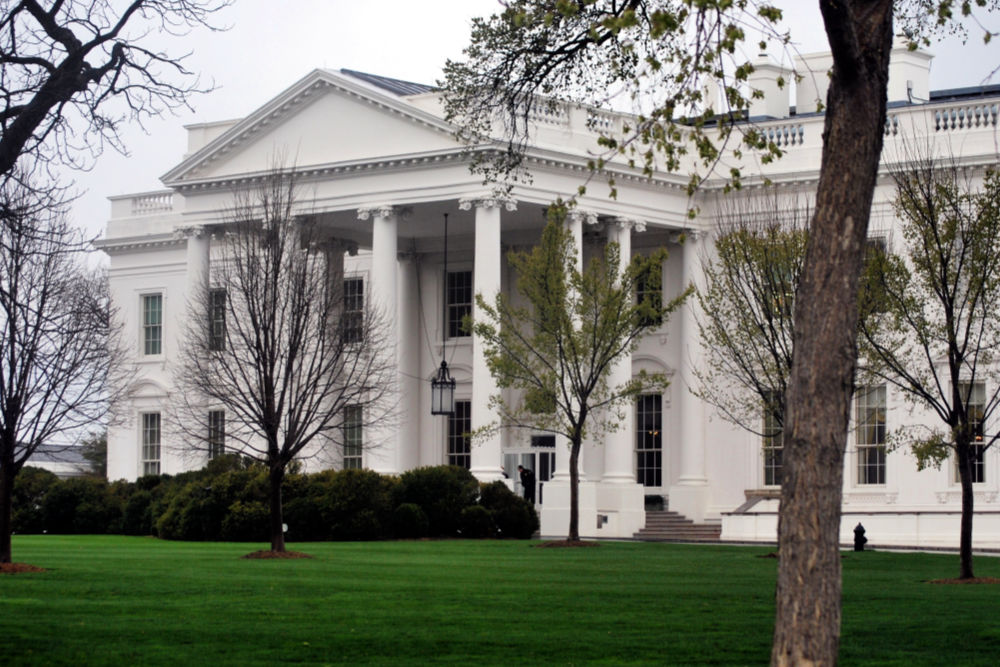
VISIT THE WHITE HOUSE, HOME OF THE US PRESIDENT
The home of every president except George Washington and an iconic symbol of America, the White House is on the north edge of the National Mall. Originally called the Presidential Mansion, it was officially renamed to its nickname of the White House by President Theodore Roosevelt in 1902.
Whilst it is easy to view the outside of the White House, both the front and rear from publicly accessible land, touring the inside is not as easy as just getting a ticket. US visitors will need to contact their member of Congress and international visitors their country’s embassy in Washington D.C.
HELPFUL LINKS:
- For more information on how to tour the White House
- If you can’t take a tour, check out the White House mobile app for the next best thing.
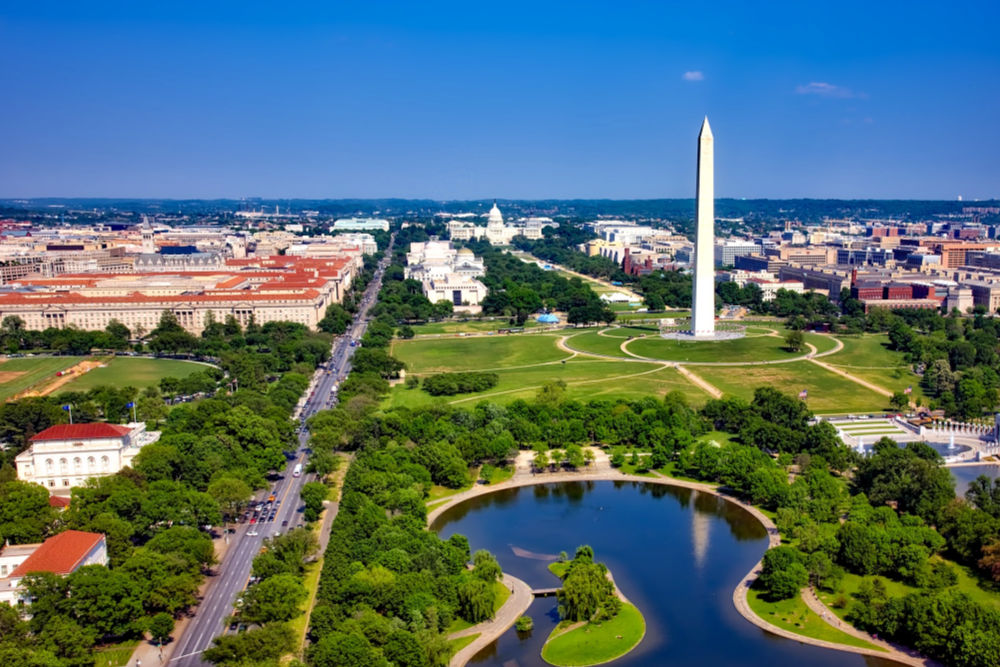
WALK AROUND THE NATIONAL MALL
The National Mall sits in the middle of Washington D.C. and many of the key sights border it. Stretching for 1.9 miles (3.0 km) between the Capitol Building and the Lincoln Monument, it is around 1,700 feet (500 m) wide for most of its length. The site of inauguration ceremonies for presidents, it is also used as a large park and you will often see people playing ball games, or just relaxing on the grass, as well as tourists and locals visiting all the attractions it contains or that line its borders.
Just walking from one end to the other will take around 40-45 minutes, but you can easily spend a couple of days in the area given the many other attractions, many of which are included in this guide. The National Mall is managed by the excellent National Park Service who are charged with maintaining the area.
HELPFUL LINK:
- Download a map of the National Mall and surrounding area here.
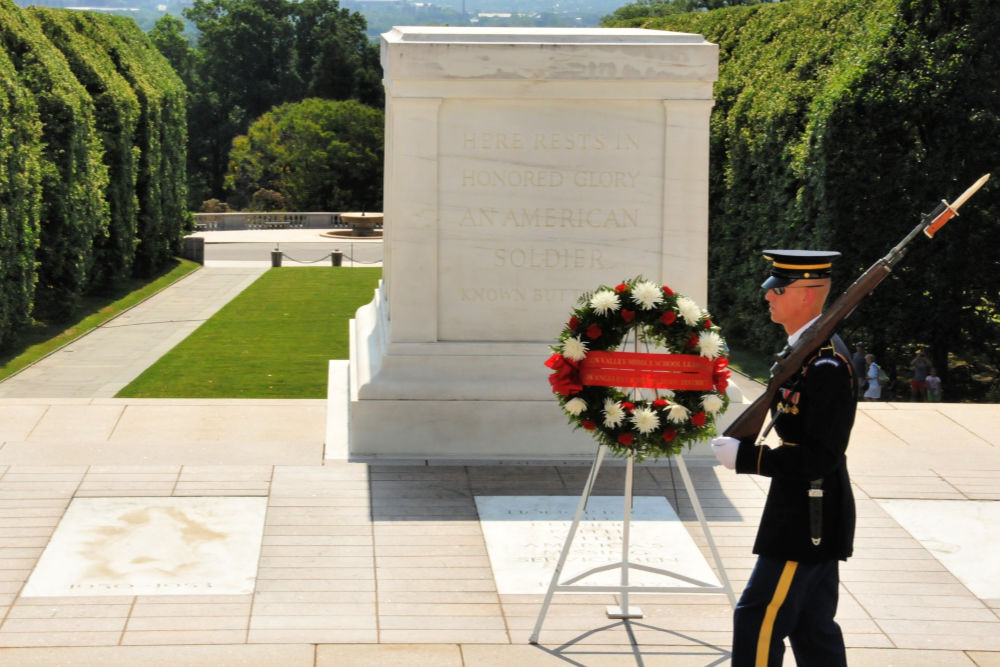
VISIT ARLINGTON NATIONAL CEMETERY
Whilst not actually in Washington, D.C., Arlington National Cemetery is just over the Potomac River in Virginia and easy to get to from the city. Witnessing the thousands of headstones of the many soldiers who are buried here, together with famous names like JFK, is quite sobering.
The cemetery also contains the USA’s Tomb of the Unknown Soldier, a tradition started by the UK and France in 1920 after World War I and now adopted by many countries around the world. At Arlington, a soldier parades endlessly in front of the stone tomb which bears the words “Here rests in honored glory an American Soldier known but to God.”
The other main attraction in the cemetery is Arlington House, The Robert E. Lee Memorial which sits on top of a hill and offers views across the cemetery as well as of the Pentagon and back to Washington, D.C. Arlington National Cemetery is situated in the former grounds of the mansion ensuring the Lee would never be able to return to his former home.
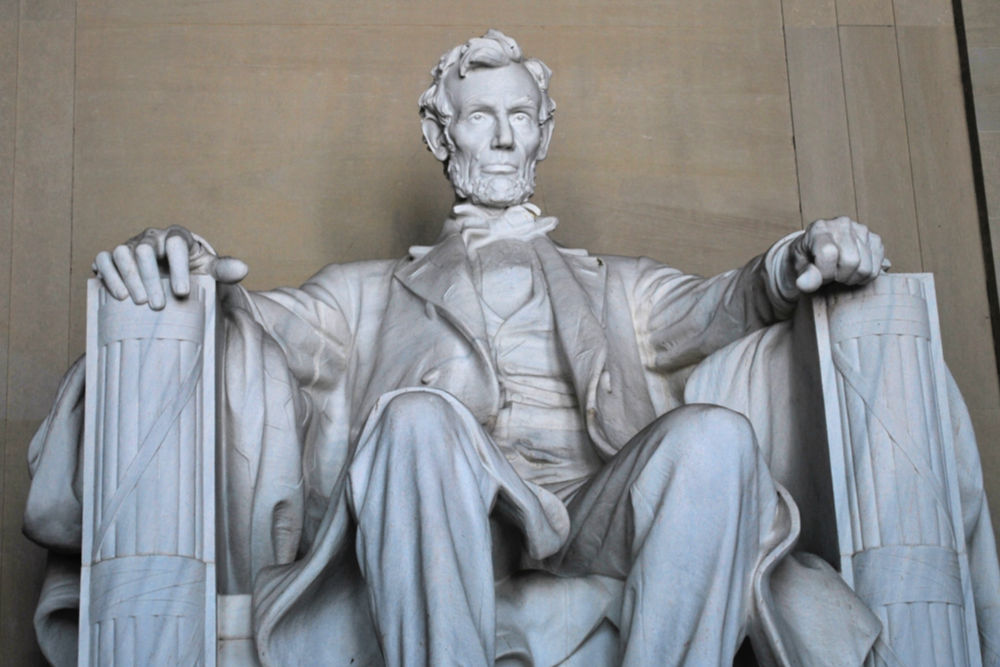
VISIT MEMORIALS TO SOME FAMOUS AMERICANS
The National Mall contains many memorials to people and events important to the history of the USA. We’ve selected three of the most famous, but you will no doubt encounter others as you explore the area.
- The Lincoln Memorial dominates the western end of the National Mall and sits in front of a large reflecting pool. Lincoln is portrayed seated with the words “In this temple, as in the hearts of the people for whom he saved the Union, the memory of Abraham Lincoln is enshrined forever.”, on the wall high above his head. The steps of the monument are where Martin Luther King Jr delivered his “I Have a Dream” speech in front of 250,000 people.
- The Jefferson Memorial is a little way off the National Mall and not quite so easy to get to on foot. This round domed monument dedicated to the author of the Declaration of Independence stands proudly on the banks of Tidal Basin of the Potomac River. Jefferson is portrayed in bronze in the centre of the open-air monument. Around the walls are words from some of his writings, the right to religious freedom and words taken from the declaration itself “We hold these truths to be self-evident: that all men are created equal, that they are endowed by their Creator with certain inalienable rights, among these are life, liberty, and the pursuit of happiness.”
- Between Lincoln and Jefferson is a relatively recent memorial to Martin Luther King. The memorial depicts a 30ft high statue of the great man emerging from the stone behind him, almost as if the work isn’t finished, or perhaps showing the depth and strength of his resolve to win the rights all men deserve? The stone is called the Stone of Hope and itself emerges from two large boulders called the Mountain of Despair. It is here that visitors enter the memorial and progress through it moving through Dr. King’s struggles in life. The Stone of Hope has the inscription “Out of the Mountain of Despair, A Stone of Hope” inscribed on it and around the memorial is a 450ft long inscription wall containing quotes from Martin Luther King’s speeches and writings.
HELPFUL LINK:
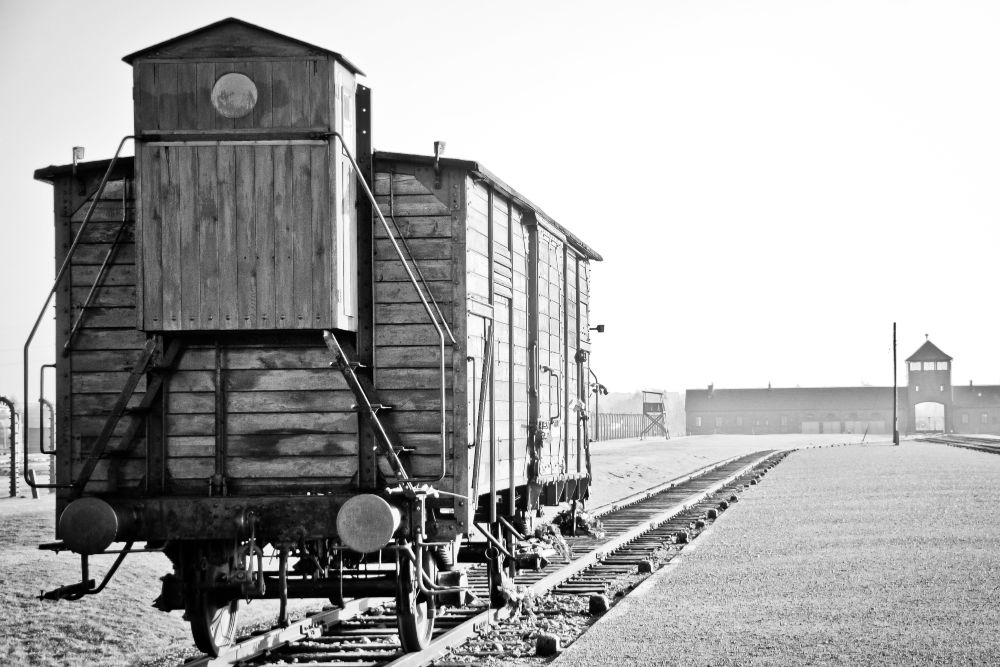
LEARN ABOUT ONE OF HUMANITY’S DARKEST HOURS AT THE HOLOCAUST MUSEUM
If you can’t get to one of the original, preserved camps, a visit to this moving museum is a good compromise. It tells the harrowing story of the Holocaust from 1933 to 1945 as well as offering places to reflect like the Hall of Witness and memorials such as the 3,000 tiles painted by school children.
It is the permanent exhibition that tells the story of the Holocaust and it is well worth spending the time to visit this in full. Set over three floors, the first floor covers the period from 1933 to the outbreak of war in 1939. It starts with some of the terrible images that met allied soldiers when they liberated the camps, images that battle-hardened soldiers found hard to stomach. It then explains how, after the Nazi’s were elected, they turned Germany into a police state and began to enact policies that turned many of their citizens (Jews, Roma, Criminals, people with disabilities and Jehovah’s Witnesses, to mention a few) into outcasts.
The second floor covers 1940 to 1945. As war raged throughout Europe and beyond, the Nazi’s continued their persecution, moving from removing rights and creating ghettos to concentration camps and later, death camps. If you’ve visited any of these camps, you will already know about the dehumanising treatment people sent to them endured, those who weren’t immediately selected to be murdered anyway.
The final floor covers the liberation of the camps as the allies achieved victory in Europe. From trying to get some semblance of justice from the perpetrators of these heinous crimes to the stories that came out about people who, sometimes risking everything, helped their fellow humans and in doing so saved so many lives.
The museum also has regular temporary exhibits which help tell more of the story of this tragic event in human history.
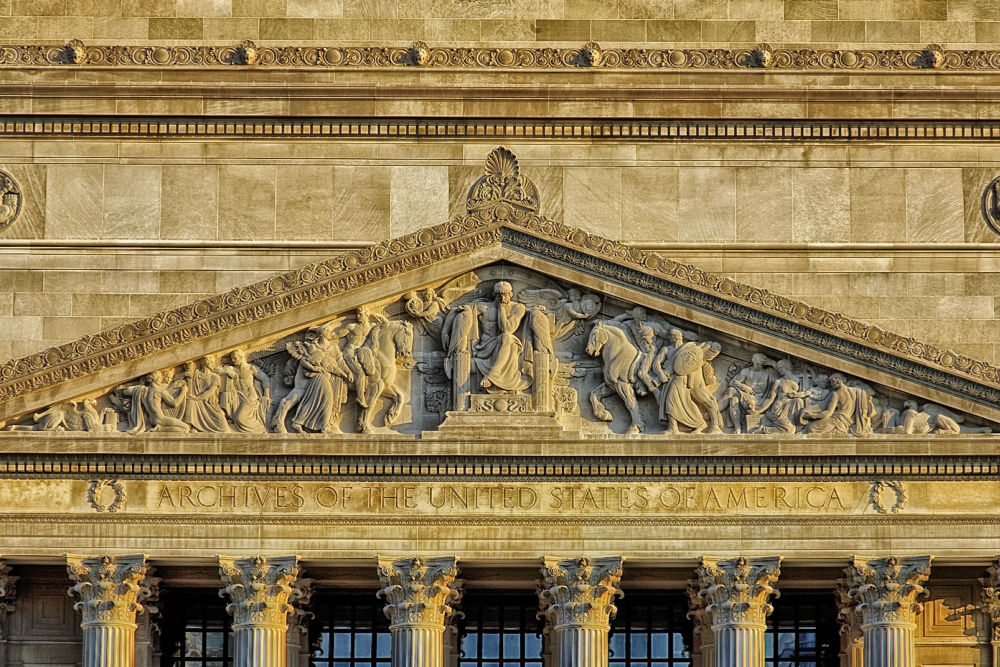
VIEW AMERICAS FOUNDING DOCUMENTS AT THE NATIONAL ARCHIVE
The National Archives holds the USA’s most important documents and archive record of and for the country. The documents are held behind protective glass in a large dimly lit room (to preserve them). Whilst in generally poor condition, to see such documents up close is still an amazing sight.
The three key documents on display, collectively known as the Charters of Freedom are:
- The Declaration of Independence which details the ideals on which the fledgeling USA would be founded and why it wanted to separate from Great Britain. Unlike the other two documents, the declaration is not legally binding but is still powerful.
- The Constitution which established the new country and began to try and unite disparate states into a single united country. This the most famous document in the country with the famous large text which begins the document reading “We the People”.
- The Bill of Rights which contains the first ten amendments to the Constitution including the most famous and oft-quoted, rights to freedom of speech and right to bear arms. The Constitution might never have been ratified without these ten amendments.
Also on display is one of the only copies of the Magna Carta outside of England. Whilst pre-dating the Constitution and Bill of Rights by several centuries, the rights outlined in the Magna Carta were used by the colonists to demand the same rights as Englishmen enjoyed. Those rights were then embedded in the Constitution and Bill of Rights once the country became independent.
HELPFUL LINK:
- The museum can get very busy during high season, so to avoid waiting in long lines, it may be wise to pay the small charge and reserve a timed ticket.
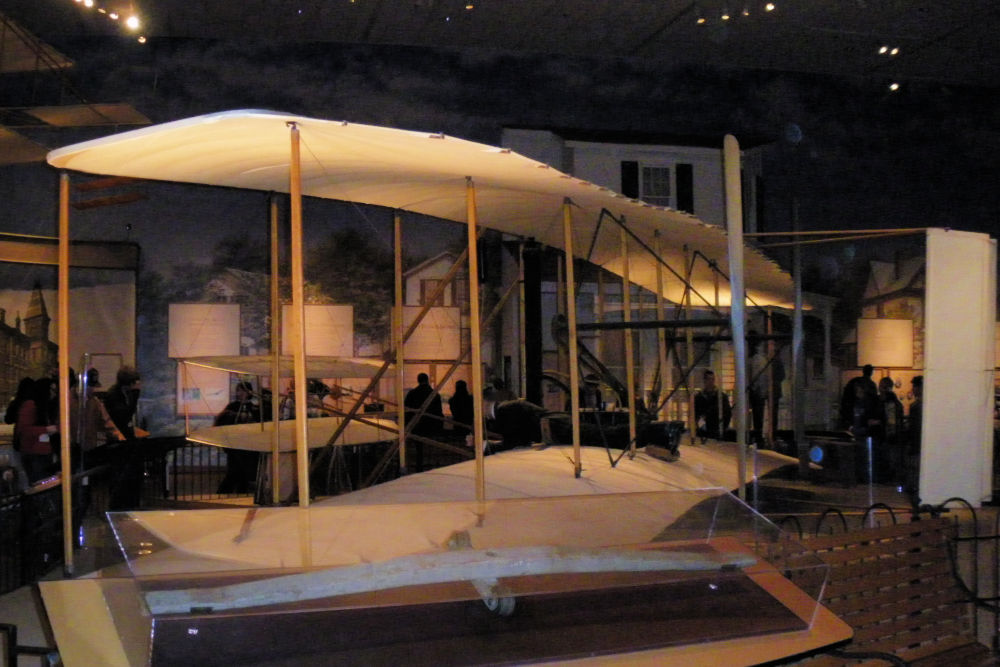
EXPLORE THE WORLD FAMOUS SMITHSONIAN MUSEUMS
The world-renowned Smithsonian offers 19 museums, galleries, gardens and even a zoo and eleven of those museums are on the National Mall. The Smithsonian was founded by James Smithsonian who lived from 1765-1829. James was a British scientist who bequeathed his estate to the United States with the intention to create “at Washington, under the name of the Smithsonian Institution, an establishment for the increase and diffusion of knowledge.”
A few of the eleven options available are:
- The National Museum of American History most famous exhibit is the original star-spangled banner, the flag that inspired the US National anthem. But in the rest of its collection, it shows many objects from US history, from cars and trains to clothing and household items.
- The National Air and Space Museum offers a plethora of items on display, from the 1903 Wright Flyer through Charles Lindbergh’s Spirit of St Louis to the Apollo 11 Command Module. A moon rock you can touch, planes from World War II and exhibitions on the solar system and beyond.
- The National Museum of Natural History showcases the natural world, from the Hope Diamond through skeletons of (formerly) living things. From insects to aquatic life to mammals and the origins of humans.
- The National Museum of African American History and Culture offers a look at the impact that African Americans have had through the history of the USA. From being brought into the country as slaves until 1877, through gaining their freedom and pushing for their rights as equal citizens and then on to how segregation was enforced with a segregated railcar on display and how famous activists such as Rosa Parks and Martin Luther King changed the world.
HELPFUL LINK:
- Official Smithsonian website where you can learn more about this institution
TIP: Visit the information centre in the Smithsonian Castle for an overveiw of the Smithsonian museums as well as highlights from each of their museums.
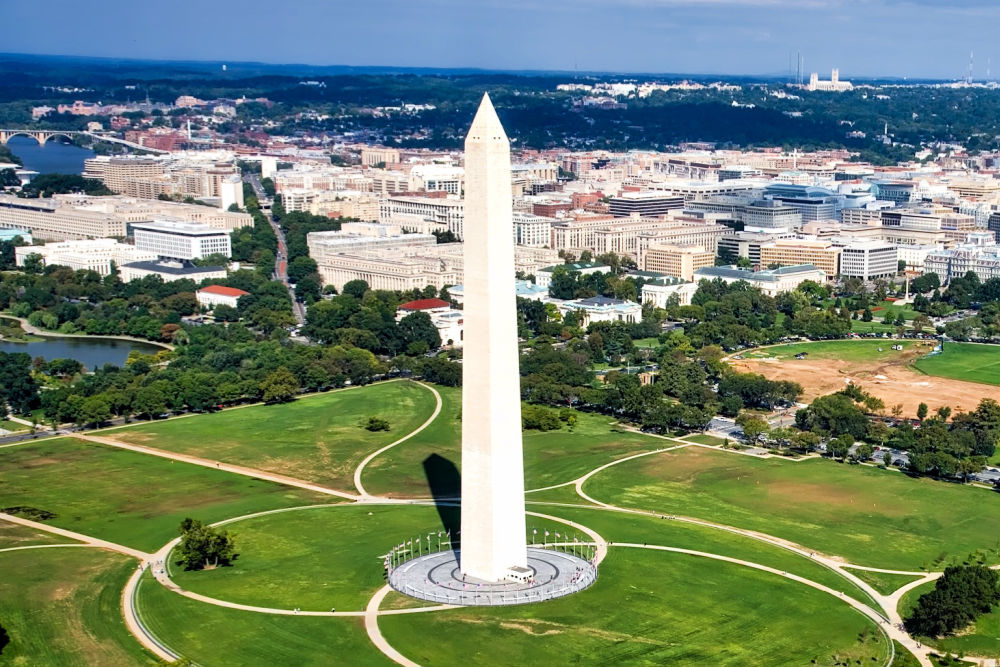
GET A GREAT VIEW FROM THE TOP OF THE WASHINGTON MONUMENT
Taking centre stage slap bang in the middle of the National Mall is the Washington Monument. This 555-foot marble obelisk was built to honour George Washington, the first president of the USA, is the worlds tallest stone structure. See if you can spot the change in colour of the marble which shows where construction was halted in 1854, before being restarted in 1877 with a different source of stone.
There is a lift (elevator) which can take you to the top of the tower for fantastic views across the National Mall and Washington D.C. Memorial stones are embedded throughout the monument, from US States, cities, foreign countries and others. Utah contributed twice, once as a state and before that as a territory, one stone is even in Welsh, contributed by Welsh citizens of New York.
An aluminium apex sits atop the monument, at the time of casting, aluminium was a rare metal, as precious as silver. Before it was installed on the monument, it was on public display in Tiffany’s in New York. People stepped over it so that they could claim they had stepped over the Washington Monument!
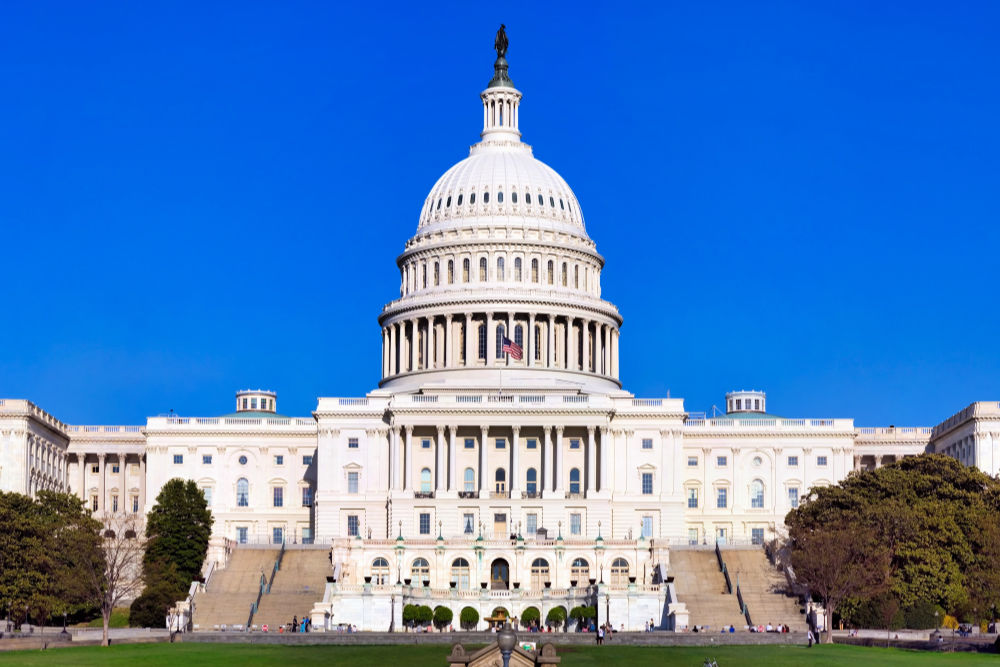
EXPLORE THE SEAT OF US GOVERNMENT AT THE CAPITOL BUILDING
At the far east end of the National Mall, you’ll find the US Capitol Building which is home to Congress where the two chambers of government, the House of Representatives and the Senate, conduct government business. Congress members are elected in numbers proportionate to the population of their state, while the Senate has two members from every state in the Union. Pennsylvania Avenue starts (or ends) just outside the US Capitol Building providing a direct link between the White House and the rest of the legislature.
Visitors can visit the building from within the visitor’s centre located on the east side of the building, from here you can join a guided tour to visit several areas of the building. However, the Congress and Senate chambers are not included on the guided tour. US visitors can obtain passes to the galleries for these two chambers from the offices of their elected representatives. International visitors can enquire at the House and Senate Appointment Desk on the upper level of the visitor’s centre.
HELPFUL LINKS:
- Download a Map of Capitol Hill
- Book your tour of the Capitol
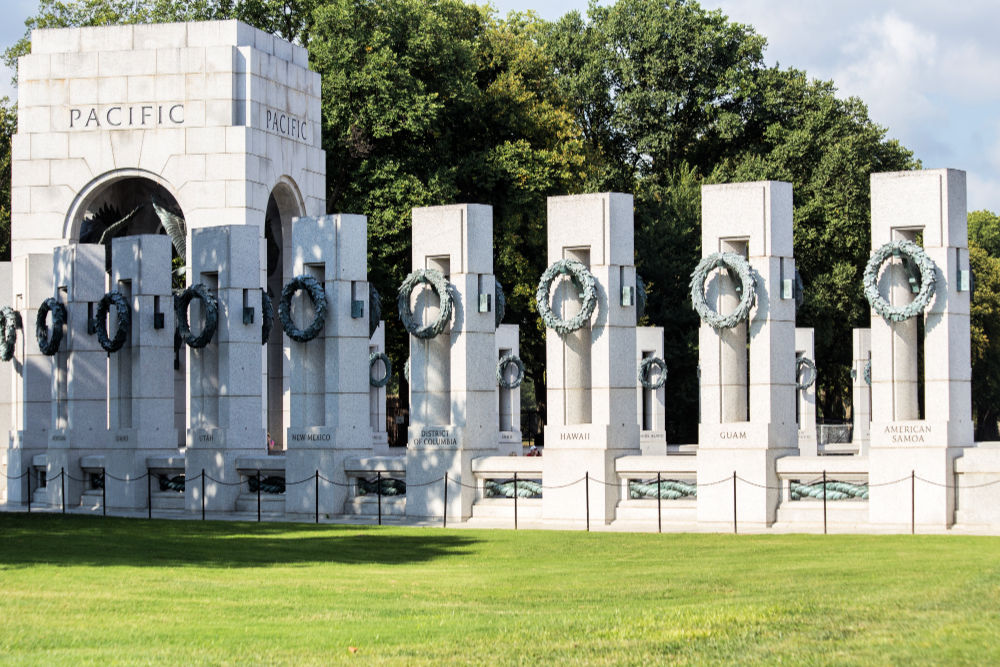
PAY YOUR RESPECTS AT THE WAR MEMORIALS
The National Mall in Washington D.C. is a natural place to remember the fallen in war. Three impressive memorials to visit and reflect on are:
Three memorials in the National Mall are:
- The World War II Memorial, dedicated in May 2004, this extensive memorial honours the 16 million who served in US Armed Forces during World War II as well as more than 400,000 who were killed. The memorial features a large water feature with fountains in the centre. Left and right of the fountain are large stone monuments representing the Pacific and Atlantic theatres of combat with smaller stone columns holding wreaths forming a large oval around the edge.
- The Korean War Memorial features a circular memorial with a triangular extension featuring statues of soldiers in combat in various poses.
- The Vietnam War Memorial is a long wall of black granite inscribed with names, the length of the wall and the smallness of the names emphasises the large cost of the conflict. Just to the south is the Vietnam Women’s Memorial, the first memorial in the capital honouring the military service of women.
Want to save this for later? Click the Pinterest button on the left for a pinnable image!
RESOURCES | PLAN YOUR WEEKEND IN WASHINGTON, D.C.
To book flights, rental cars, accommodations, and activities for your trip, please check out our recommended travel providers, favourite apps and websites.
- For people interested in the history of the capital, A History Lover’s Guide to Washington, D.C.: Designed for Democracy will take you on a historical journey round the city.
- If you’re visiting Washingon, D.C. with children then the Kids’ Travel Guide – Washington, DC: The fun way to discover Washington, DC could be just the ticket for keeping them entertained as you enjoy the nation’s capital.
- For a top-rated traditional guide book, check out DK Eyewitness Travel Guide Washington, DC for plenty of tips and information about the sites you’ll see on your weekend getaway.
These are a few tours we would recommend for your weekend in Washington, D.C.
Some of the links in the post above are affiliate links. This means if you click on the link and purchase the item, we will receive an affiliate commission but this does not affect the price to you. Please read our full disclosure policy here.





